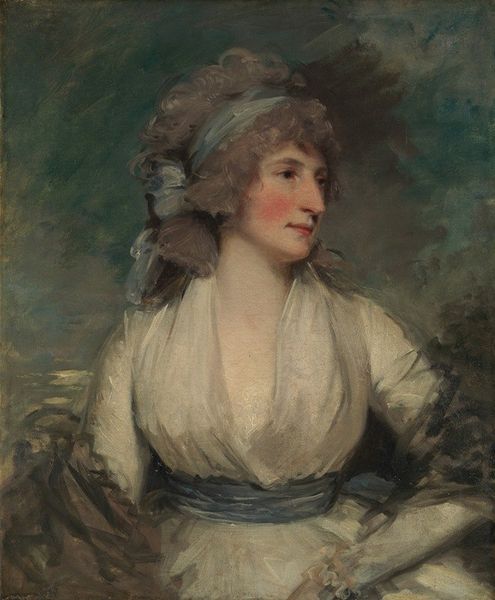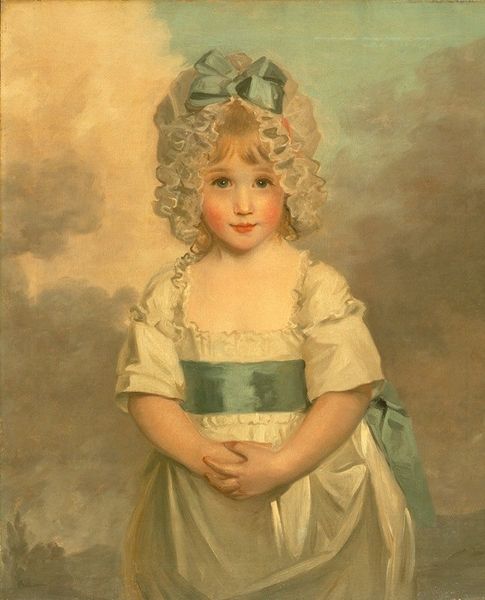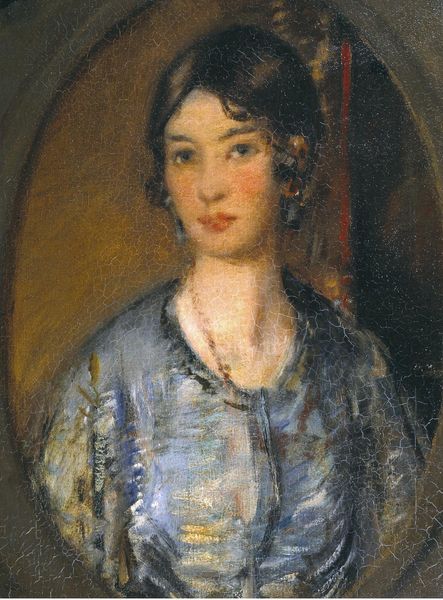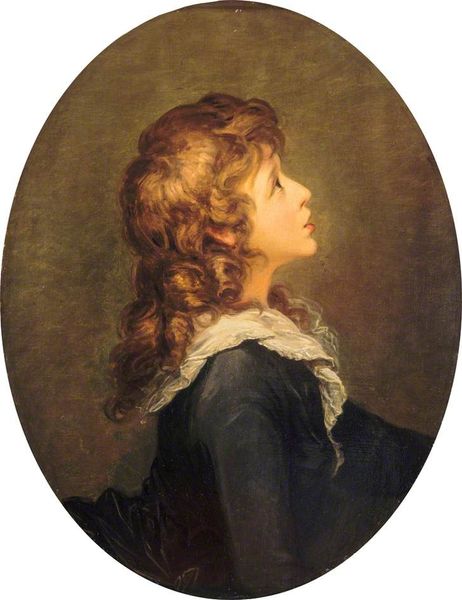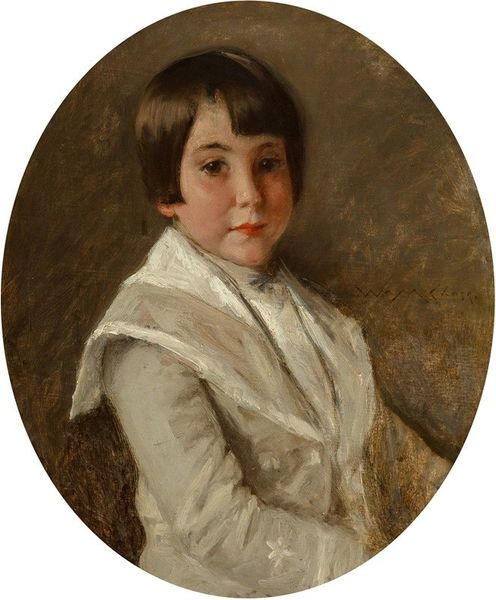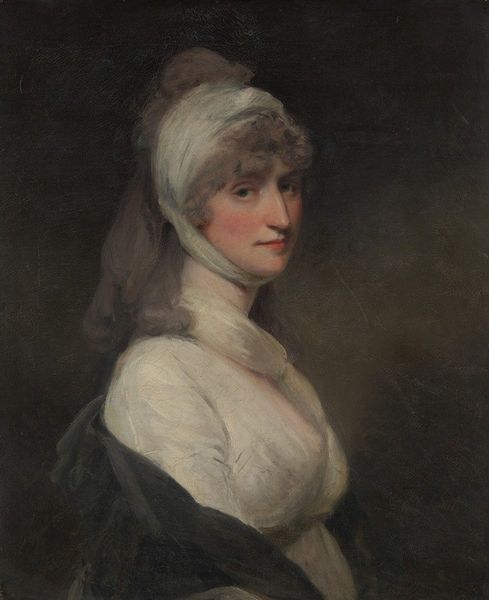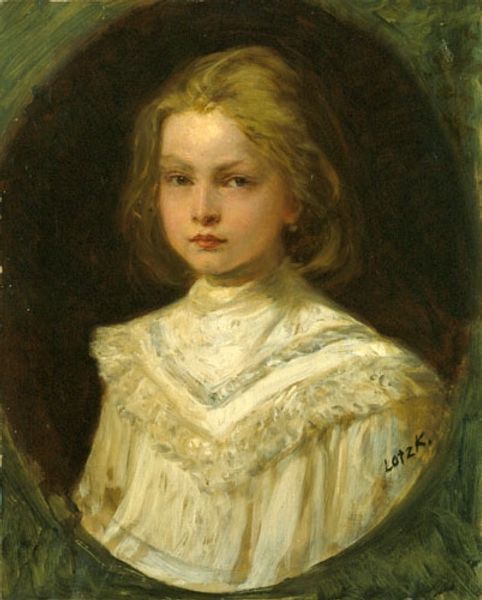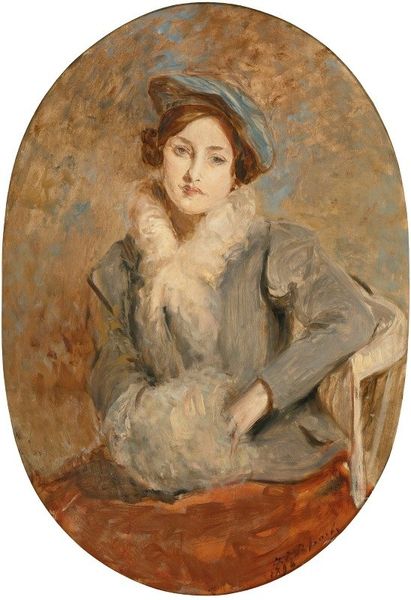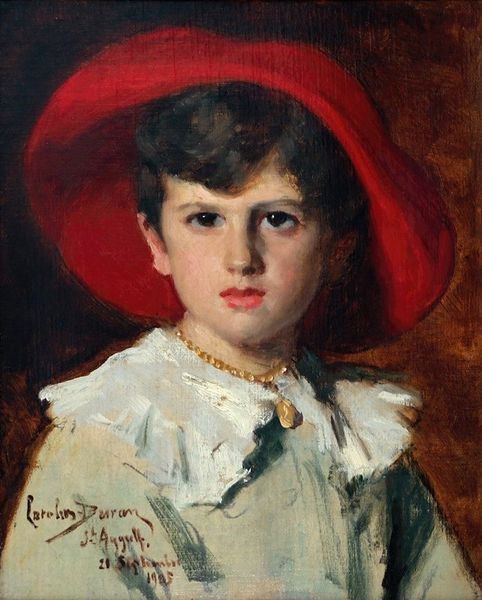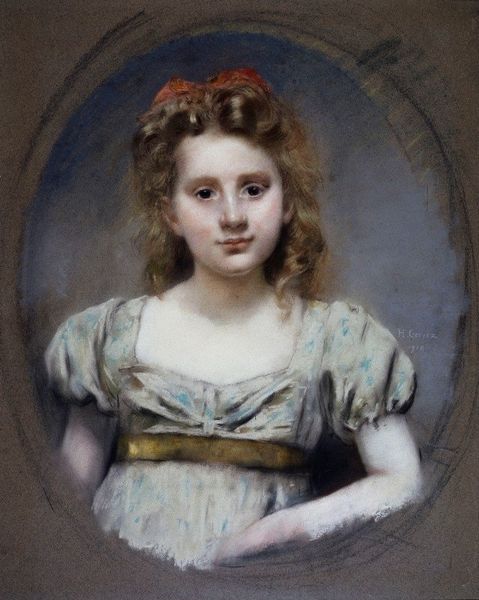
Copyright: Public Domain: Artvee
Curator: This is James McNeill Whistler’s “Blue and Coral; The Little Blue Bonnet,” painted in 1898. The oval shape is quite striking. Editor: The impasto is pretty thick, isn't it? Especially around the ruffled collar and that almost violently scribbled area just off the left side of the girl’s chest. It feels both delicate and haphazard. Curator: It reflects a shift in late 19th-century art. We’re moving away from strictly academic portrayals and seeing more personal interpretations, Impressionistic techniques used for more than just landscapes. It is a departure and acceptance of imperfection, even within portraiture, that is exciting. Editor: I am most drawn to the child’s gaze—level, unflinching—which invites a particular sense of vulnerability. You can really sense how the textures create that interplay between presentation and feeling, what her ruffles and adornments may try to convey versus what she shows. It raises many interesting questions about the materials of identity. Curator: And Whistler had a fascinating understanding of identity, performing the role of artist-dandy, battling with critics, cultivating a specific image through the social sphere. He truly embraced the spectacle and politics of being an artist. This contrasts with the domestic presentation of the model—possibly a professional model in an arranged tableau? Editor: Looking closely, you can almost feel the push and pull of the brushstrokes building the form, see the hand of the artist. Consider the economic backdrop of materials and modeling during this period... Curator: It’s tempting to wonder, who *was* the intended audience? Was it painted as an intimate work, as the subject’s direct connection to the viewer suggests? Or was this an intentional painting meant for public view—meant to capture the fleeting effects of natural light and to show his modern abilities? It invites so many different views of the history of portraits! Editor: It’s precisely this sort of ambiguity in execution that continues to invite viewers into an intimate relationship with the subject and art itself, isn't it? Even after so long. Curator: Indeed. And perhaps what appears straightforward initially reveals layers upon deeper reflection.
Comments
No comments
Be the first to comment and join the conversation on the ultimate creative platform.
